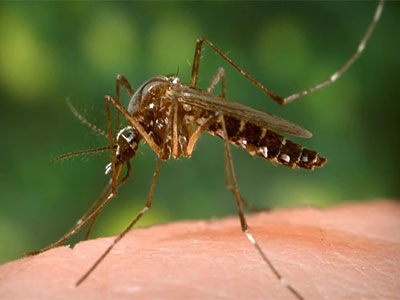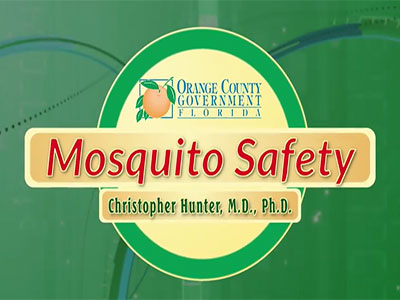Mosquito Control
Mission Statement
The mission of Mosquito Control is to control mosquito populations to reduce the risk of mosquito-borne diseases.
Mosquito Service Requests
To log a mosquito complaint or service request, please contact Mosquito Control at 407-742-0505. Please provide your name, phone number and address as the staff will perform a site inspection of the area to determine treatment options.
Did You Know...?
- The mosquito is a common flying insect that is found around the world. There are about 2,800 different species of them.
- The mosquito females drink blood and the nectar of plants; the males only sip plant nectar. When a female bites, she also injects an anticoagulant anti-clotting chemical into the prey to keep the victims blood flowing. She finds her victims by sight and smell, and also by detecting their warmth. Not all mosquito species bite humans.
- The mosquito is often a carrier of diseases, such as malaria, dengue fever, encephalitis, yellow fever, West Nile virus, dog heartworm, and many others. The females, who drink blood, can carry disease from one animal or human to another as they feed.
- Female mosquitoes can live as long a one month.
- Depending on the species, female mosquitoes may lay 100 to 300 eggs at a time.
- Classification: Kingdom Animalia; Phylum Arthropoda arthropods; Class Insecta insects; Order Diptera "two wings"; Family Culicidae.
Mosquito Life Cycle
Mosquitoes go through four distinct stages of development during a lifetime. Undergoing a complete metamorphosis, the four stages are egg, pupa, larva, and adult.
The full life-cycle of a mosquito takes about a month. After drinking blood, adult females lay a raft of 50 to 400 tiny white eggs in standing water or very slow-moving water.
Within a week, the eggs hatch into larvae sometimes called "wrigglers" that breathe air through tubes which they poke above the surface of the water. Larvae eat bits of floating organic matter and each other. Larvae molt four times as they grow; after the fourth molt, they are called "pupae".
Pupae also called "tumblers" also live near the surface of the water, breathing through two horn-like tubes called siphons on their back. Pupae don't eat.
An adult mosquito emerges from a pupa when the skin splits after a couple of days. The adult lives for a few weeks.
Videos
The Zika virus is another wild card dealt to us by nature. It was first discovered in 1947, but only recently grew into one of the newest global health threats, primarily for pregnant women and their unborn children.
El virus del Zika es otra sorpresa que nos da la naturaleza. Fue descubierto en 1947, pero no fue sino hasta hace poco que se convirtió en una de las más recientes amenazas globales para la salud, principalmente para las mujeres embarazadas y sus bebés en gestación.
According to the Centers for Disease Control (CDC), common symptoms of Zika include fever, rash, joint pain and conjunctivitis.



